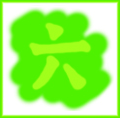With plenty of Tibet in the middle, and even me tripping over on ice-skates. Yes, that’s right: your humble author has committed the equivalent of blogging masturbation and uploaded a compilation of clips from traveling in China to YouTube. My only excuse for this shameless self-indulgence is that I am home sick and have nothing better to do. And my sole defense is that I had a clip of my cat playing the keyboard but in a temporary moment of sanity decided not to include it:
In other news – and in a vain attempt to redeem this post – I am hearing and seeing some anectodal evidence that swine flu is hitting Beida and Tsinghua. Of course, it could just as well be a spate of bad colds with the winter arriving: the symptoms are indistinguishable, with the exception of the feverish desire to upload travel clips to YouTube that characterises H1N1 (oh no!). But a lot of students are calling in sick, and one Beijing hospital has had 6,000 calls in the last two days.













